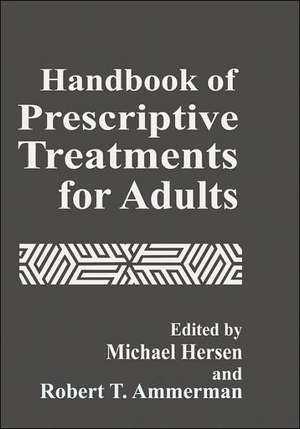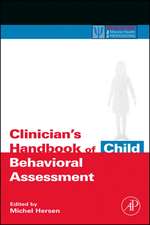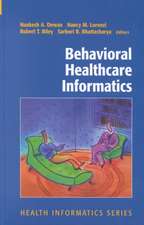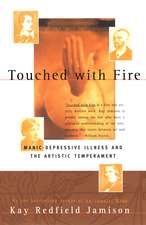Handbook of Prescriptive Treatments for Adults
Editat de Robert T. Ammerman, Michel Hersenen Limba Engleză Hardback – 29 iun 1994
| Toate formatele și edițiile | Preț | Express |
|---|---|---|
| Paperback (1) | 1423.02 lei 6-8 săpt. | |
| Springer Us – 17 iun 2013 | 1423.02 lei 6-8 săpt. | |
| Hardback (1) | 1439.14 lei 6-8 săpt. | |
| Springer Us – 29 iun 1994 | 1439.14 lei 6-8 săpt. |
Preț: 1439.14 lei
Preț vechi: 1514.89 lei
-5% Nou
Puncte Express: 2159
Preț estimativ în valută:
275.42€ • 286.47$ • 227.37£
275.42€ • 286.47$ • 227.37£
Carte tipărită la comandă
Livrare economică 14-28 aprilie
Preluare comenzi: 021 569.72.76
Specificații
ISBN-13: 9780306446825
ISBN-10: 0306446820
Pagini: 512
Ilustrații: XXIV, 512 p. 5 illus.
Dimensiuni: 178 x 254 x 30 mm
Greutate: 1.15 kg
Ediția:1994
Editura: Springer Us
Colecția Springer
Locul publicării:New York, NY, United States
ISBN-10: 0306446820
Pagini: 512
Ilustrații: XXIV, 512 p. 5 illus.
Dimensiuni: 178 x 254 x 30 mm
Greutate: 1.15 kg
Ediția:1994
Editura: Springer Us
Colecția Springer
Locul publicării:New York, NY, United States
Public țintă
ResearchDescriere
This book could not have been conceptualized or published 20 years ago. Indeed, it is doubtful that we could have organized the material for this handbook 10 years ago. Over the last 20 years, however, the painstaking efforts of many clinical researchers working with a variety of resistive psychopathologies have resulted in specific psychotherapies and pharmacotherapies that are effective with a significant propor tion of patients, at least for some of the disorders. Much clinical research remains to be carried out in the forthcoming decades. But now that we are nearing the 21st century, at least some statement about efficacy can be made. In 1967, Gordon Paul succinctly stated that the ultimate goal of treatment outcome research is to determine "What treatment, by whom, is most effective for this individual with that specific problem, and under which set of circumstances" (p. 111). At that time, empirical evaluations of psychosocial and pharmacologic treatments were few and far between. Methodological strategies for determining treatment effectiveness were also in the formative stage, as exemplified by introduc tion of control groups that received inactive interventions (i. e. , placebo) and the relatively recent practice of comparing two or more treatments in addition to placebo. In the almost three decades since Paul's oft-quoted dictum, both the quantity and the quality of treatment outcome research with adults have increased dramati cally.
Cuprins
Introduction: Overview of the Issues in Prescriptive Treatments (R. Acierno et al.). Specific Disorders: Dementia (B.H. Mulsant, J.M. Rosen). Psychoactive Substance Use Disorders (K.S. Walitzer, G.J. Connors). Schizophrenia (S.A. Anderson et al.). Unipolar Depression (L.P. Rehm et al.). Bipolar Disorder (R. Philibert, G. Winokur). Panic Disorder (M.G. Craske, S.V. Waikar). Social Phobia (R.P. Mattick, G. Andrews). Simple Phobia (F.D. McGlynn). ObsessiveCompulsive Disorder (C. Duggan). Trichotillomania (G.A.H. Cristenson, T.B. Mackenzie). PostTraumatic Stress Disorder (T.M. Keane et al.). Generalized Anxiety Disorder (T.D. Borkovec, L. Roemer). Special Issues: Psychophysiological Disorders (D.A. Williamson, S.B. Sebastian). Pain Management (R.D. Kerns). The Violent Patient (G.T. Harris, M.E. Rice). Woman Battering (D.R. Follingstad, H. Breiter). 6 additional articles. Index.












